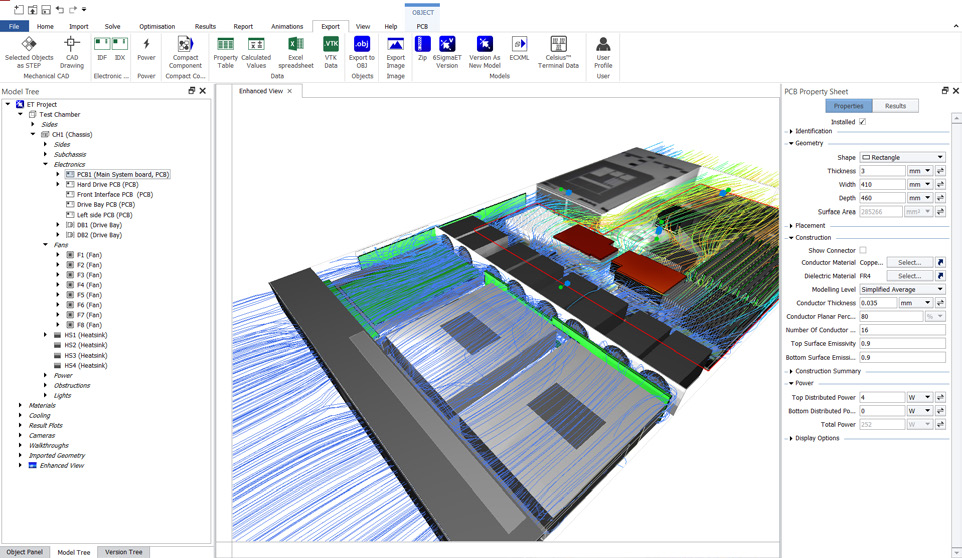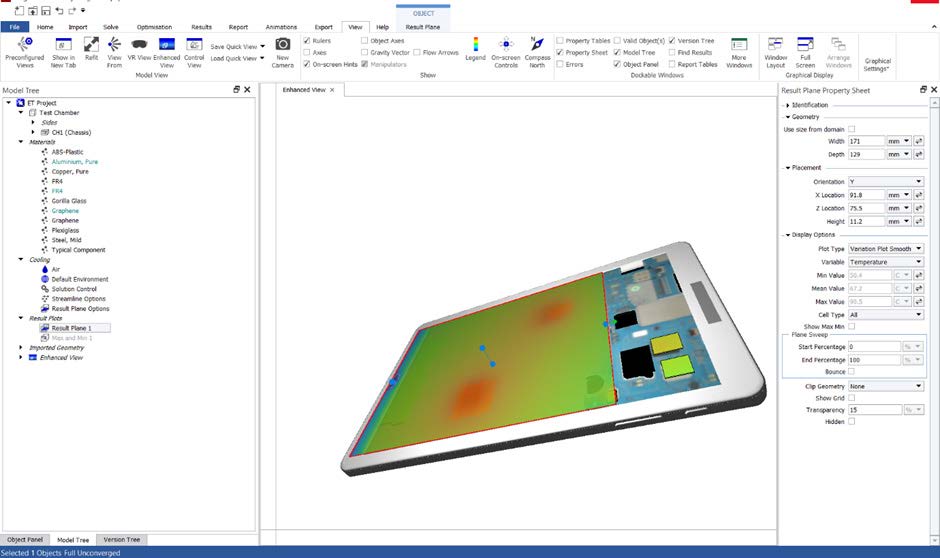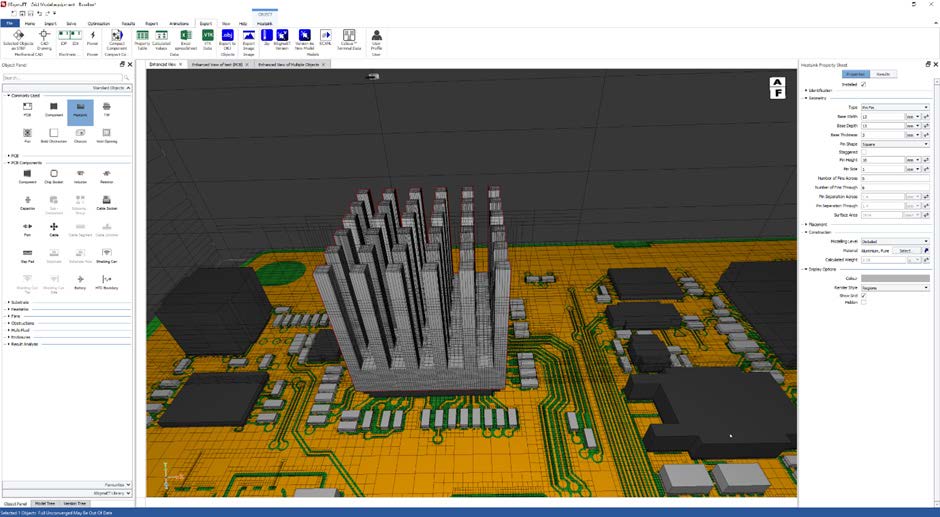Datasheet
Celsius EC Solver Targets Electronics Cooling Applications
Electronics cooling simulation software for accurate and fast analysis of the thermal performance of electronics systems.
Overview
Overview
Cadence Celsius EC Solver technology1 is designed specifically to enable electronics system designers to quickly and accurately address today’s most challenging thermal/electronics cooling management problems. The Celsius EC Solver utilizes a powerful computational engine and meshing technology that enables designers to model and analyze complex designs to reduce the risks of product failures and optimize thermal solutions to maximize performance.
The Celsius EC Solver analyzes the fluid flow and heat transfer of even the most complex electronics systems. The software solves for convection, conduction, and radiation using a proprietary multi-level unstructured (MLUS) meshing technology. It can analyze airflow, temperature, and heat transfer in electronics assemblies, enclosures, and power electronics for natural convection, forced convection, solar heating, and liquid cooling.
In addition, the solver offers an intuitive user interface with intelligent modeling objects that are automatically placed within the system-level model, providing automatic object-based mesh generation, determining the ideal grid size for a simulation, and automatically checking for collision and modeling errors before solving.
1Formerly 6SigmaET by Future Facilities; acquired by Cadence in July 2022.
Benefits
Features
Intelligent Modeling Objects
Celsius EC Solver models are built using its collection of over 100 intelligent objects designed specifically for electronics devices. These intelligent objects include PCBs, heat sinks, cold plate fans, enclosures, heat pipes, and many other components found in electronics systems.
CAD and PCB Modeling
The Celsius EC Solver imports complex mechanical computer-aided design (MCAD) models from Creo Parametric, Solidworks, CATIA, and other major MCAD tools. Imported MCAD models can be analyzed without simplification.
PCB designs can also be imported into the solver from all major electrical CAD (ECAD) software programs using the ODB++ or IPC2581 file formats. PCB construction can be modeled in detail and can include conductor layers, vias, and component sizes and positions.
The software is fast and fits our thermal modeling needs perfectly. Experimental testing in our laboratories has proven that the simulation results predict component temperatures with accuracy.
Norbert Engelberts, Director, OTS BV
Automatic Mesh Generation
The Celsius EC Solver’s object-based meshing feature adapts the mesh to ensure accurate analysis of the device. Rules can be optionally defined, providing meshing guidance to ensure that the individual objects are simulated correctly.
Powerful Solver and Optimization
The Celsius EC Solver’s parallel processing technology distributes simulation tasks across multiple cores and multiple machines, enabling fast analysis of complex electronics designs in both transient and steady-state simulation modes.
The software efficiently drives design optimization by parameterizing geometry, material properties, power, etc. Any board and component layout can be easily varied for position, size, and orientation to meet a target objective, providing critical information regarding the sensitivity of the thermal results to changes in the design parameters while minimizing the number of simulations.
Automatic Reporting
The Celsius EC Solver reporting functionality is tailored to the needs of electronics designers. The software automatically creates fully customizable reports, which allow engineers to communicate, compare, and analyze simulation results. The advanced post-processing features enable designers to create high-quality 3D visualizations to pinpoint thermal issues and visualize design improvements.




